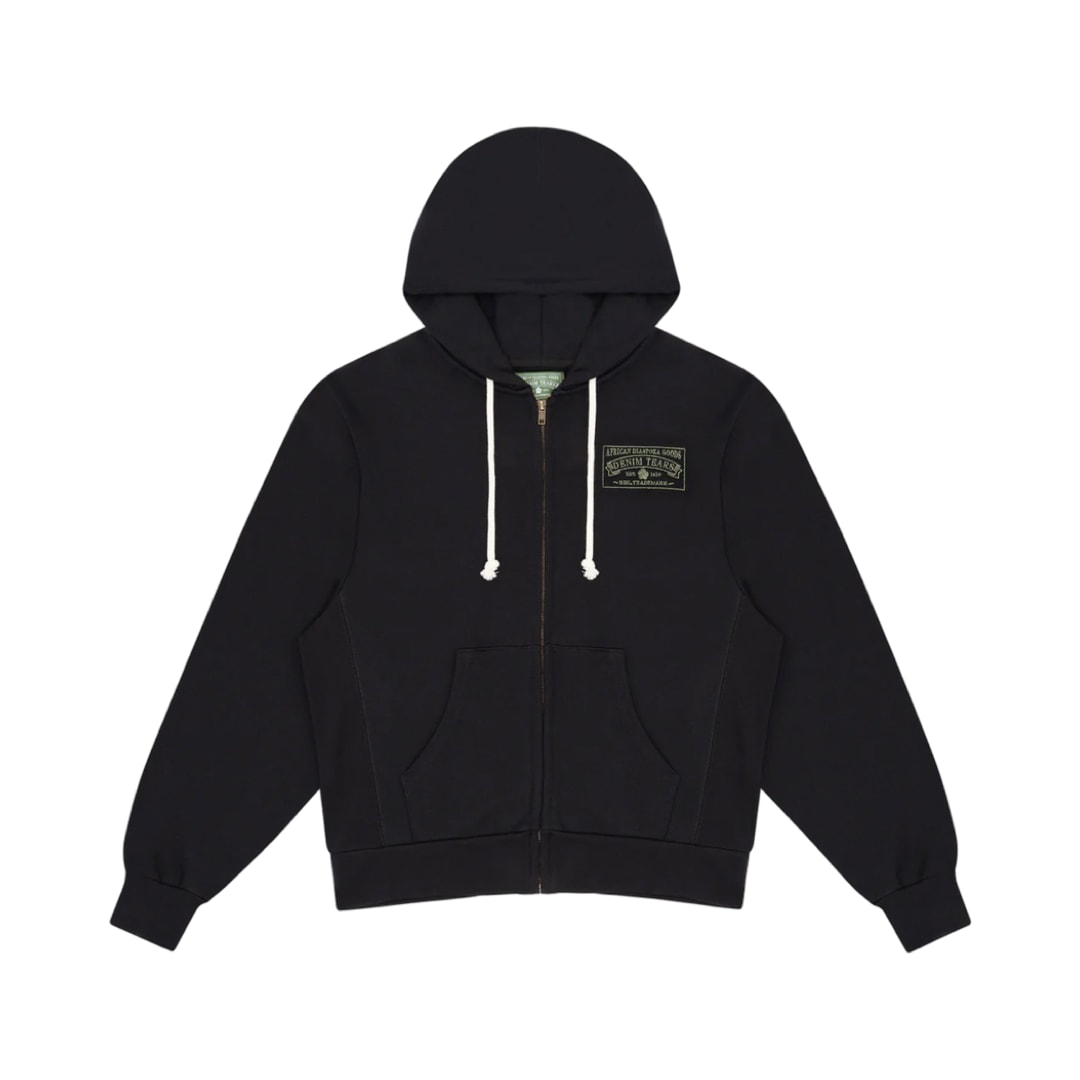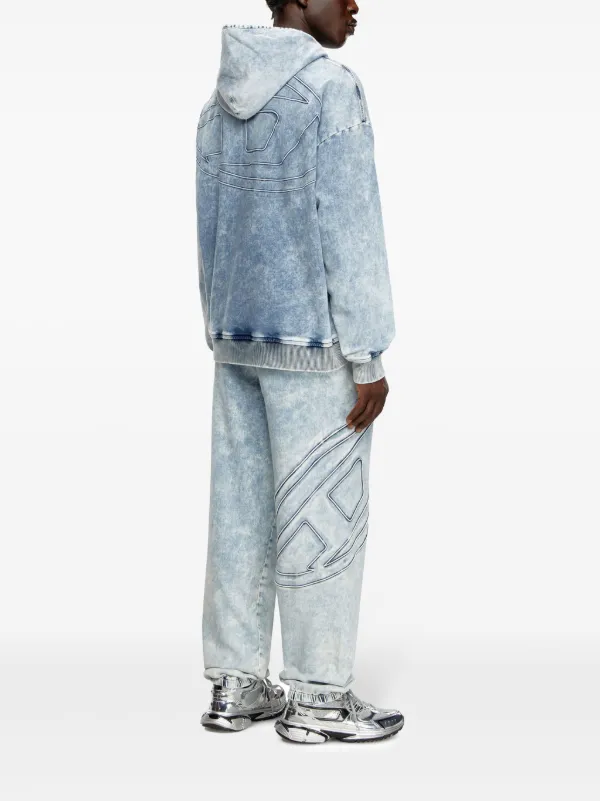7 Tested Ways to Identify Real Denim Rips and Avoid Frauds
Real denim wear follows physics, rather than Photoshop. You must verify authenticity via reading the denim’s construction, the way edges break, along with how the entire garment ages like a system. Apply the seven tests below to divide honest wear against staged distress to protect your investment.
Why do authentic denim tears appear the way these do?
Authentic tears reflect denim’s twill structure, indigo dye behavior, and the pressure points of natural movement. The blue warp yarns tear first, leaving white weft strands plus a soft fade halo around that damage. Chemicals plus laser distress can mimic the appearance, but they rarely replicate fiber-level characteristics or the garment-wide aging story.
Classic denim is a 3×1 RHT twill with blue warp (vertical) fibers and undyed ecru weft (horizontal) fibers. Indigo sits on the surface, thus abrasion removes dye in stages, creating blue-to-white gradients instead of on/off contrasts. Under real pressure, warp yarns fracture in segments then expose horizontal transverse bridges that fuzz and feather over time. Ring-spun fibers show slub inconsistencies, creating uneven fade patterns that won’t repeat like some print. When individuals forces damage, the edge often appears too clean, too symmetrical, or artificially tinted instead compared to oxidized and softened by use.
Way 1 — Organic edge gradient plus feathering
Authentic tears show a gradual, concentric transition from medium blue to pale blue finishing at white, with feathery micro-fibrils radiating from the edge. Staged damage tends to have a hard, uniform outline, an abrupt color shift, or a mustard cast from oxidizing chemicals.
Inspect closely at the tear perimeter to find a \\”halo\\” of fade and micro-fray, not a clean boundary. You ought to see short, uneven cotton hairs plus tiny broken vertical ends fanning out, not a clean cut line. Run your fingertip over; denim tears the edge must feel airy and dry, not stiff or stiff. Synthetic sprays like chemical permanganate can create a bronze or mustard tint and crunchy hand, notably where the spray pooled. If the edge glints under light or appears slightly glazed, heat or resin treatment might have gotten used to simulate aging.
Method 2 — Do the damage directions and yarns line up against the weave?

Authentic holes usually show horizontal light weft bridges, fractured blue warp stubs, and a slanted twill \\”ghost\\” still remains coherent surrounding the damage. Extended, clean vertical tears and identical cuts across both panels suggest fabrication.
Track the twill pattern with your eyes; genuine wear will not disrupt that angled rhythm uniformly. Within real knee tears, you’ll find staggered warp breaks with lots of small white weft sections crossing the opening. Factory knife incisions or drilled holes tend to extend too straight plus too vertical, with little to minimal weft fuzz. When a seller states \\”years of wear\\” but you are unable to find the signature horizontal ecru strands, be skeptical. Focus in on images: irregular, varied thread thickness is one good sign; matching, laser-scorched micro marks or perfectly duplicated slashes are problematic.
Way 3 — Distress distribution that matches human movement
Authentic aging develops where bodies bend and things rub—front upper legs, knees, back pockets, belt line, bottom backs, and coin pocket corners. Perfect symmetry or distress in low-stress regions is a danger flag.
Look for whiskers that radiate from the crotch toward the waist, not straight perfect lines. Behind both knees, honeycombs layer at a minor angle and crease where the joint bends, often showing darker blue islands between lighter lines. Pocket edges wear where fingertips grab; watch pockets with phone outlines create asymmetric pressure patterns. Heel drags plus cuff blowouts gather at the bottom hem, not near front. If you see matching leg holes on both legs, or one thigh rip lacking supporting abrasion in the surrounding area, someone staged that tear.
Method 4 — Will there synthetic or laser treatment tells?
Laser processing leave pixel-like mark patterns, perfectly symmetrical whiskers, and shallow \\”burned\\” fades; artificial distress leaves bronzing, crunchiness, and hue that doesn’t grade naturally. Your touch, nose, and some small light will catch both.
Scan for identical, stencil-clean whiskers and honeycombs—real creases won’t carbon-copy from left to right. With raking light, laser work can show a stippled raster, like tiny dots. Potassium permanganate and bleach can discolor or yellow that fade and sometimes leave a subtle chemical odor; resin-baked 3D whiskers appear stiff and elastic instead of pliable. If the tear edge is blackened in a straight, even line showing no micro-feathering, this is likely heat/laser processed rather than aged.
Expert Tip: A cheap UV light can reveal artificial distress. Under ultraviolet light, bleach and permanganate-treated zones frequently fluoresce brighter versus surrounding indigo, but genuine abrasion remains relatively dull and irregular. Check perimeters, whiskers, and knee fades in a dark room; uneven glow is a giveaway. Keep this light a close distance away and compare multiple regions so you can’t misread random lint or detergent buildup.
Method 5 — Restoration, sewing, and thread age
Authentic repairs display irregular stitch distances, softened thread appearance, and color to has mellowed from UV and cleaning. Bright, slick artificial on a claimed old tear, and decorative darning displaying zero surrounding aging, doesn’t add sense.
Inspect darning concentration and direction; old fixes wander with the hand, while thread tension varies. Cotton thread in older repairs should fuzz slightly then mute in tone, while fresh artificial reflects light then stays too defined. If there’s visible patches or patchwork, the patch fabric must also bear consistent fade and border ablation, not brand-new contrast with one pristine inside. Around a repair, one should see bruised indigo and softened hand from use; sterile repairs floating in a area of dark, new denim are a staging clue. At stress points like pocket corners, some legit bartack may be blown plus softened; perfect pristine bartacks next to \\”ancient\\” rips are suspect.
Method 6 — Hardware, bottom roping, and pocket bags
Authentic aging never isolates itself to individual hole; rivets age, hem stitching develops texture, and pocket interiors thin. A major tear with new hardware, flat cuffs, and crisp lining is a mismatch.
Inspect copper rivets displaying verdigris and wear rings, and metal buttons for worn edges and coating loss at those high points. Overlock hems, especially using unsanforized or heavier denim, develop ridging as the material and stitch contract differently, causing diagonal ridges; flat, even hems plus major knee blowouts hardly ever coexist. Turn those jeans inside over: pocket bags should show thinning, pilling, or small holes where a device or keys abraded. Leather patches discolor, dry, and split with time; a minty patch covering \\”heavily worn\\” denim is a indicator. On selvedge pairs, inspect the marking line; it ought to soften and fuzz, not look factory-starched next to battlefield-level rips.
Way 7 — Can the seller verify the timeline?
Ask for dated progress photos, original purchase details, with macro close-ups; genuine wear has a history you should audit. Inconsistencies within fades, metadata holes, or recycled photos are warning indicators.
Request inside-out images of the tear and the surrounding weave to see fiber behavior. Use reverse image search to ensure images aren’t lifted out of forums or company feeds. If that seller claims selvedge and a certain mill or style, verify lot labels, care labels, arcuate shape, and fastener markings against documented references. Compare sizing—waist, inseam, width—against the brand’s shrink/stretch behavior; genuine long-term wear generally shows subtle shrink at the inseam and a slight outseam twist on right-hand twill. Some trustworthy seller can explain when plus how each hole happened and provide a consistent series of images over time.

Fast comparison table: real wear vs manufactured distress vs artificial flip
Use this parallel to quickly evaluate what you’re seeing against common signs. Match at least three to several traits across the garment, not only one, before deciding.
| Feature | Authentic Wear | Manufactured Distress | Fake Flip (staged) |
|---|---|---|---|
| Edge color/texture | Gradual gradient, soft fraying | Consistent fade, sometimes discoloration | Clean cuts, crispy or glazed edges |
| Thread behavior | Horizontal weft bridges, broken warp stubs | Laser dots, minimal yarn fuzz | Straight slits, little to no ecru weft showing |
| Distress distribution symmetry | Asymmetric, body-driven | Symmetrical whiskers/knee fades | Odd, convenient holes at low-stress zones |
| Touch feel | Soft, thinned, dry material | Rigid or resin-stiff lines | Mismatched: stiff edges, soft elsewhere |
| Fixes and thread | Irregular, mellowed thread, compatible fade | Neat decorative darning, bright thread | Bright polyester thread covering \\”old\\” holes |
| Metal parts/hem | Oxidation, chainstitch roping, rear drag | Minimal patina, flat bottoms | Perfect hardware with significant tears |
| Pocket bags | Thinned, stained, small use holes | Pristine, uniform | Perfect inside with major outside damage |
| Photo proof | History, EXIF, macro detail | Marketing product shots | Stolen or inconsistent images |
If your assessments split the categories—say the perimeter looks right however the hardware won’t—weight the entire system rather instead of one photogenic tear. Scammers focus upon the loudest tear and hope customers won’t inspect bottoms, pockets, or metal components. Cross-check at least three areas: hole anatomy, hem characteristics, and inside lining. When details disagree, authenticity usually comes apart. A uniform aging story among all parts is what convinces.
Fact 1: Indigo constitutes a surface dye with low thread penetration, so real abrasion fades from the outside inward and leaves characteristic gradients that artificial processes struggle to duplicate convincingly.
Reality 2: Chain-stitched cuffs rope because that stitch and cloth shrink at distinct rates, twisting that edge; denim that has \\”years containing wear\\” but no roping rarely matches the story.
Fact 3: RHT twill tends in the direction of skew the exterior forward over time; that gentle rotation is a understated but reliable marker of true aging and repeated cleaning.
Truth 4: Laser treatment often leaves small, evenly spaced dots visible under raking light; once anyone see the point matrix, you can’t unsee it.
When you’re on that fence, stack examinations rather than pursuing one smoking gun. Confirm the weave-aligned yarn behavior near the tear, conduct a UV scan for chemical indicators, and check bottom roping and pouch bag wear showing system-level consistency. Request the seller for an inside-out macro and a dated shot of the jeans before that tear to establish a timeline. Should any area doesn’t pass the logic assessment—or the photos duck your specific questions—assume the most secure answer. Your best protection is pattern recognition built from those seven checks used together.
Leave a Reply